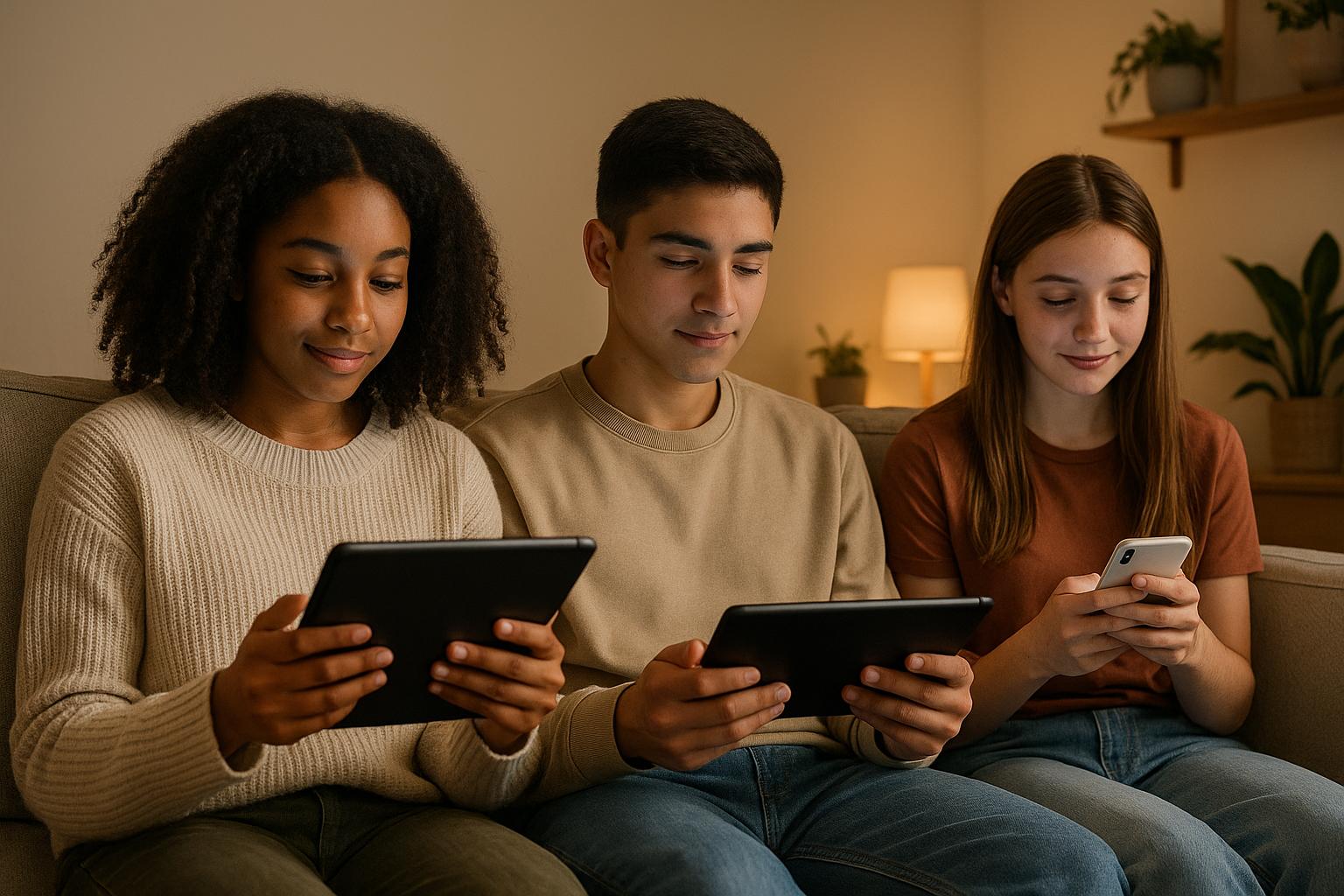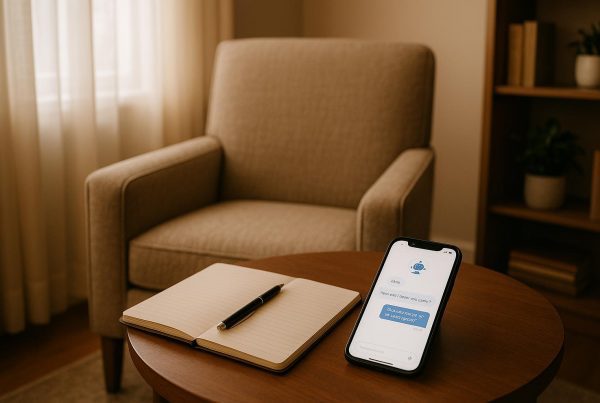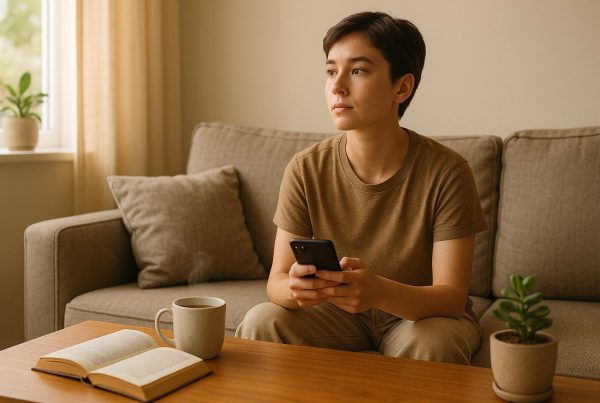The mental health of young people is under unprecedented strain. Rising rates of anxiety, depression, self-harm, and other challenges are leaving millions of youth feeling isolated and unsupported. Yet, amidst this crisis, digital mental health services have emerged as powerful tools, offering accessible, affordable, and scalable solutions for youth across the globe. In this article, we’ll explore how these services are transforming lives, drawing insights from an in-depth discussion featuring mental health leaders, youth advocates, and researchers.
Understanding the Youth Mental Health Crisis
Recent years have seen an alarming decline in youth mental health, with several factors fueling this trend. Experts like Dr. Samuel McKay from Australia’s Origin Center for Youth Mental Health attribute the crisis to "global megatrends" such as climate change, social media misuse, economic uncertainty, and declining social cohesion.
Adding to these challenges, a staggering 75% of mental illnesses begin before the age of 25, underscoring the urgency of early intervention. Yet, many young people – especially those in rural or underserved areas – face barriers to accessing traditional mental health services due to cost, stigma, and availability.
The Power of Digital Mental Health Solutions
Digital mental health tools are bridging these gaps, offering young people support where and when they need it most. These tools range from professionally moderated online communities to apps designed for self-help and coping strategies. Unlike traditional mental health services, which may involve long wait times or high costs, digital solutions provide immediate, affordable, and often anonymous access to care.
For individuals like Chase Carlile, a neurodiverse, transgender youth advocate and Reachout Australia ambassador, digital platforms were a lifeline. Chase shared how watching others share their lived experiences online helped him better understand his own struggles with depression, anxiety, and gender dysphoria. These platforms empowered him to take the first step in seeking help and starting important conversations with family and friends.
Key Solutions Leading the Digital Revolution
1. Peer-Led Online Communities
Platforms like Reachout Australia enable youth to connect with others who have faced similar challenges. Through peer-led chat services, young people can have safe and empathetic conversations with trained individuals who understand their struggles. Chase emphasized how these forums provided him with practical advice and a sense of belonging, particularly as someone living in a rural area with limited in-person resources.
2. Apps for Targeted Support
Innovative apps, such as Origin’s Melo, tackle specific mental health concerns like rumination and worry. These tools offer evidence-based interventions in a user-friendly format, helping young people manage their mental health independently. Another noteworthy example is BUD, a suicide prevention app designed for international students, incorporating culturally sensitive approaches to meet their unique needs.
3. Blended Care Models
The integration of digital tools with in-person services has proven highly effective. For example, Origin’s Reframe It program combines online cognitive behavioral therapy (CBT) with school-based support, ensuring youth at risk of suicide receive both personalized and immediate care. Young people can complete CBT modules independently while having access to on-site well-being staff if needed.
4. Guidelines for Safe Online Communication
Recognizing the challenges of harmful content on social media, projects like Chat Safe promote safe, evidence-based communication about sensitive topics such as self-harm and suicide. With over 15 million users globally, these guidelines empower young people to navigate online spaces responsibly while accessing helpful information.
Benefits of Digital Mental Health Services
1. Accessibility Anytime, Anywhere
Digital platforms eliminate geographical and logistical barriers. Youth in remote areas, like Chase, can now access the same level of support as those in urban centers. This accessibility also extends to non-traditional hours, ensuring help is available even at 2:00 am when in-person services are closed.
2. Immediate, Cost-Effective Solutions
For young people who may be intimidated by the cost and stigma of therapy, digital tools provide affordable or free alternatives. This low barrier to entry ensures that more individuals can seek help without delay.
3. Anonymity and Emotional Safety
Many youth feel more comfortable opening up online, where they can remain anonymous. This reduces the fear of judgment and creates a safe space for vulnerable conversations.
4. Tailored and Scalable Support
Digital solutions are increasingly personalized, using advancements in AI to adapt to individual needs. However, experts caution that high-quality input and ethical oversight are essential to ensure these tools remain safe and effective.
Challenges and Risks to Address
While digital mental health tools have numerous advantages, they also come with challenges.
- Quality of Information: Many youth rely on social media for mental health advice, where content is not always fact-checked. This highlights the need for digital literacy and critical thinking skills to help young people identify credible resources.
- AI and Personalization Risks: As AI-powered tools become more prevalent in mental health care, questions arise about their ability to provide nuanced, reliable, and culturally appropriate support. Experts like Dr. McKay suggest developing best-practice guidelines for AI prompts to ensure ethical use.
- Cultural Sensitivity: Services must account for diverse cultural and linguistic needs to prevent exclusion. This includes co-designing tools with input from First Nations youth and other underrepresented groups.
Building a Better Future with Co-Design
Central to the success of digital mental health solutions is co-design – engaging youth in the creation process to ensure tools are relevant, inclusive, and effective. Chase’s journey highlights the power of lived experience in shaping impactful resources. For example, his involvement with Reachout Australia has enabled him to advocate for better access and representation for rural, neurodiverse, and transgender communities.
Similarly, projects like Origin’s BUD app have relied on input from international students to create culturally tailored interventions. By incorporating diverse perspectives, these initiatives demonstrate how co-design can break down barriers and build trust.
Key Takeaways
- Digital mental health tools are revolutionizing access, offering 24/7 support and reducing barriers like stigma, cost, and geographic constraints.
- Youth co-design is essential to creating culturally appropriate, impactful solutions. Involving diverse voices ensures inclusivity and relevance.
- Blended care models combining digital tools with in-person support provide flexible, effective mental health interventions.
- Digital literacy is critical. Equipping young people with skills to identify credible resources ensures safe and constructive engagement online.
- AI-powered solutions hold promise, but ethical oversight and best-practice guidelines are needed to maximize their benefits.
- Shared experiences matter. Platforms that allow youth to connect with peers foster empathy, reduce isolation, and promote resilience.
- Cultural considerations must be prioritized to ensure no group is left behind, particularly in indigenous and minority communities.
Conclusion
Digital mental health services are not merely a supplement to traditional care but a transformative force reshaping how youth access and experience support. By meeting young people where they are – online – these tools have the potential to bridge systemic gaps while empowering individuals to take charge of their mental well-being. However, success depends on ethical innovation, co-design, and an unwavering commitment to accessibility and inclusivity.
As the world continues to grapple with youth mental health challenges, the message is clear: we must lean into technology’s potential to build a more hopeful and supportive future for all.
Source: "eMHIC Fireside Chat Webinar: Youth Mental Health Understood" – eMHIC, YouTube, Aug 7, 2025 – https://www.youtube.com/watch?v=PxyPX0Xt0uk
Use: Embedded for reference. Brief quotes used for commentary/review.



